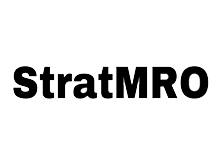Seminar | 08-Mar-2019
Posted on | 08-Mar-2019
PROCEEDINGS OF ROUND TABLE DISCUSSION ON “STRATEGIC PARTRNERSHIP AND INDIGENISATION: WAY AHEAD”
1. An RTD was conducted by the CENJOWS in collaboration with the “South Asia Defence and Strategic Review” and TRILEGAL Team on 11 Feb 2018 at the Purple Bay, Jodhpur Officers’ Hostel. DCIDS PP&FD and DCIDS (DOT) from HQ IDS, DGWE and DGFP from Army HQs and several other serving and retired officers from three Services, DRDO and Industry participated in the RTD. All aspects of the Strategic Partnership and Indigenisation were discussed. Participants were largely of the view that a large number of policy issues affecting indigenous development of the defence equipment have been addressed during the last four years. Provisions of the DPP 2016 such as enhanced FDI, a new category of procurement ‘Buy Indian-IDDM’ and simplified ‘Make-II’ procedure have sent out the right signal for enhancing ‘Make in India Programme’ although full impact of these changes is yet to be experienced. A large number of amendments have been carried out in the DPP 2016 to make it more users friendly. Planned Defence Industrial corridors are likely to give a major boost to the indigenous development of the defence equipments.
2. Strategic Partnership (SP) model came in for maximum discussion as its implementation details have not yet been clearly understood. The SP Model policy was clarified by several participants. Its three important provisions namely; hybridity, transactional advisors and unique SP and OEM selection methodology was highlighted. Nuances of selection of the SP and OEMs were explained. Queries about the possible permutation and combination of the SP and OEMs were answered stating that a lot of flexibility is available in the policy for establishing the groupings of SPs and OEMs formally as well as informally. Important aspect of IPR protection was discussed and it was clarified that IPR issues have been taken care of. Apprehensions about assured order were also allayed. It was explained that the challenges of TOT absorption, FDI and IPR will remain for future resolutions as well.
3. TRILEGAL Team was of the view that a large number of loose ends are yet to be stitched together as the legal contractual provisions will call for micro details with exactitude which are yet to emerge. The key issues would be enhancement of FDI beyond 49 percent, Transfer of Technology (ToT) and role of the foreign OEMs. Identification and definition of the technologies involved in the SP model will be essential for finalising the contracts. Harmonising SP and FDI policies is also considered essential. It is expected that in DPP 2018 FDI limit will be raised to 74 percent for resolving ownership issues. Defining responsibility of the OEM including liability clause will be the core issue. A separate body for implementing SP model was required to be set up in the MoD which needs to be done on priority. Offsets policy is needed to be stabilised for speedy indigenisation. Stable policy and resolution of structural issues is necessary for making the offset system work.
4. Defence Production Policy is still in the draft stage and is needed to be finalised soon. Defence services support would be needed for implementing the Production Policy. A Defence Industrial Planning document is need for the country whereby competition in various sectors should be rationalised. Projects should be driven by the users and project managers may be appointed by name. An L1 T1 approach is essential for attracting better technology. Users must be involved from the beginning. Users need to specify functionality and not technology.
5. DGFP informed that enough funds are available for defence modernisation and budgetary support is not a problem.
6. Case study of the FRCV for SP Model procurement was discussed in which DRDO scientist also participated. He informed that nearly 1500 industries were collaborating with the DRDO at present and DRDO was transferring technology to both government and private entities. It was brought out that a good business model would be essential for the ToT. Also a life span of 50 years for the equipment should be planned with upgradation every eight years.
7. Queries raised by the participants were satisfactorily replied by the panellists and it was felt that more such discussions should be planned in future for bringing clarity to emerging indigenisation efforts and unfolding SP Model of procurement.
























